by Ride It Wrench It 3 Comments
Removing and installing the rear wheel of your Harley can save you hundreds of dollars in labor fees. The process can be intimidating at first glance. Once you walk through the steps you will find it more doable than you might have expected.
Most riders have put slip-ons on their bike and have performed brake pad replacements. If you are one of those riders then you have completed almost half of the process of removing and installing your rear wheel. Once you remove the slip-ons and the brake caliper it's just a matter of pulling the axle to remove the wheel. Then you can take the wheel to a local shop to have your new tire mounted and balanced.
Many shops will do this for under $50. Once that is done just perform the operation in reverse to re-install the rear wheel. The only difficult part is going to be adjusting the drive belt tension. Just remember though, if you don’t get the deflection right on the first try, you can do it again before locking the wheel in place.
Learning this process will also help with other tasks on your bike should the need arise. Changing your isolator, rear fork removal for belt replacement, sprocket replacement, replacing rear wheel bearings, all of these items require the removal of the rear wheel. Knowing how to do this will open the door to many other more difficult and shop expensive repairs providing you with a way to save money and learn your motorcycle better.
You may have to purchase a couple of tools depending on your stock. As I always say, use the service manual for your specific motorcycle. You need the specifications the manual provides to do maintenance work. The processes are often closely related across a wide variety of bikes but the torque specifications can be completely different. A bike stand is necessary; you cannot do this job without a way to raise and support the rear of the bike. You will also need a torque wrench that will go up to 100-foot pounds to complete the axle installation.
You will also need a torque wrench that will go up to 100-foot pounds to complete the axle installation.
Other tools include a large socket, breaker bar for the axle cone nut, a crescent wrench, or more preferably a large box-end wrench, and silver anti-seize lubricant. Even if you have to purchase some of these items, the savings of dealership labor rates for this task will cover the cost of the tools at which point you will now have the tools and be able to perform the task and other tasks related to rear-wheel removal yourself.
When it comes time to choose a tire refer to your owners or service manual sizing chart. Dunlop is the stock tire Harley is using on their newest bikes, but there are other tires you may want to use instead.
Sort by Best sellingA-ZPrice Low-HighPrice High-LowAvailabilitySpecials
Widening the back end of your Harley Davidson with a custom wide tyre kit is a modification that has become very popular in today’s custom world. To help you achieve your desired look we supply a variety of complete custom wide tyre kits from some expert manufacturers. If you own a Harley Davidson of any kind you stand a good chance of finding a custom wide tyre kit to fit your model here. Whether you want to make a small change to your rear tyre size or you are looking to create a monster of a back end we will be able to help you achieve your goal.
To help you achieve your desired look we supply a variety of complete custom wide tyre kits from some expert manufacturers. If you own a Harley Davidson of any kind you stand a good chance of finding a custom wide tyre kit to fit your model here. Whether you want to make a small change to your rear tyre size or you are looking to create a monster of a back end we will be able to help you achieve your goal.
Showing 1 to 50 of 65 products in this section.
Zodiac Extra Wide Tire Kit 250 Wide Rear Tire in Black Powder Coated Finish For 2000-2006 Softail Models (722968) €1,921.55
out of stock (1)
Zodiac Wide Tire Kits 200/250 Wide Ass Swingarm Kit With Black Powder Coated Swingarm For 1996-2005 Dyna Models (236891)
€1,938.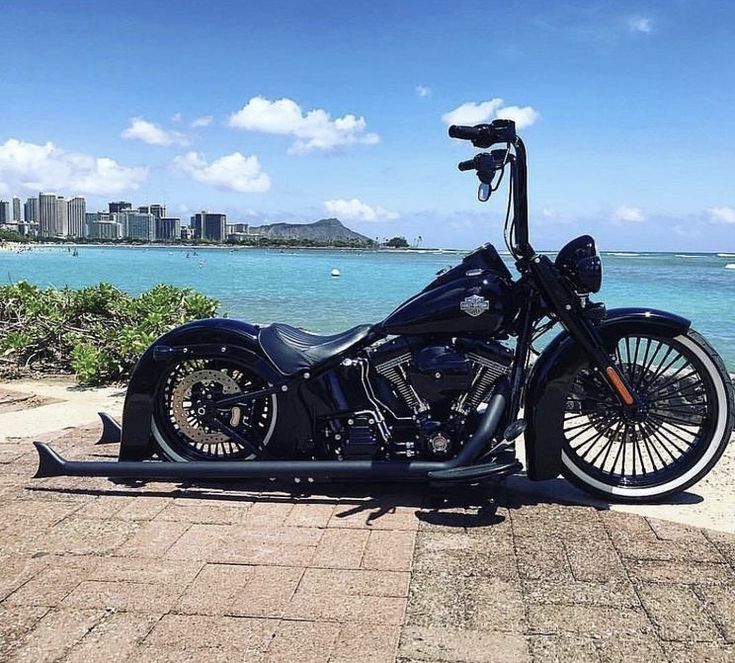 65
65
out of stock (1)
Zodiac Wide-Ass Wide Tire Kit With Offset Kit in Raw Finish For 2006-2011 Dyna Models (730522) €1,985.29
available
Zodiac Complete 6-Speed Conversion 250 Series Wide Tire Kit For 1991-1999 Evolution Softail Models (700938) €3,049.48
out of stock
Zodiac Ton Pels Signature 250 Deluxe Wide Tire Kit With Transmission Offset Kit in Raw Finish For 1991-1999 Softail And Wide Tail Frames (722916)
€1,582.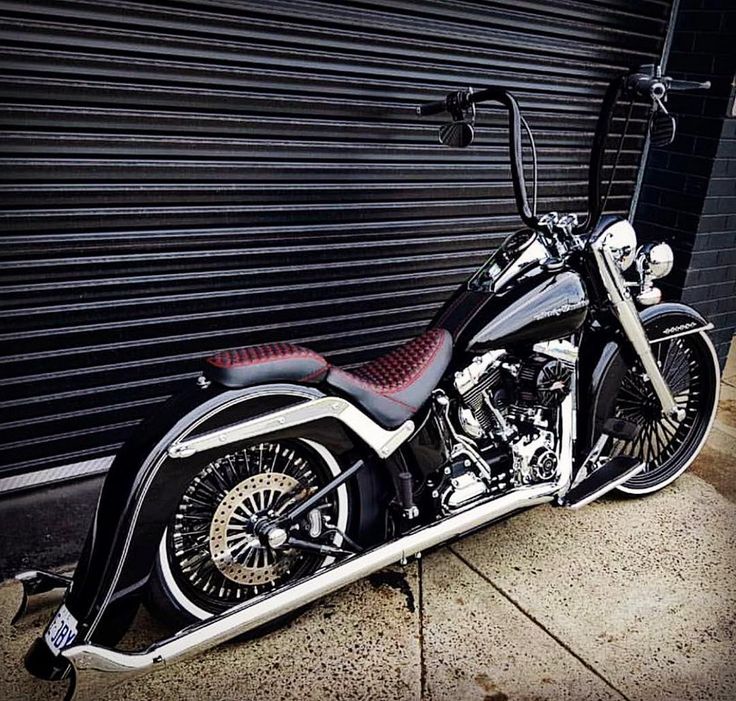 44
44
out of stock
Zodiac Radium 250 Swing Arm Kit For 2012-2017 Softail Models (756028) €1,502.58
available
Zodiac Smart Ass 300 Series Wheel Conversion Kit With Right Side Drive Transmission Conversion For 1994-1999 Evolution Softail Models (701830) €1,859.72
out of stock
Zodiac Ton Pels Signature Series Curved Swingarm 250 Wide Tire Kit With Transmission Offset Kit in Raw Finish For 1991-1999 Softail Models And Tail Frames (722917)
€1,331.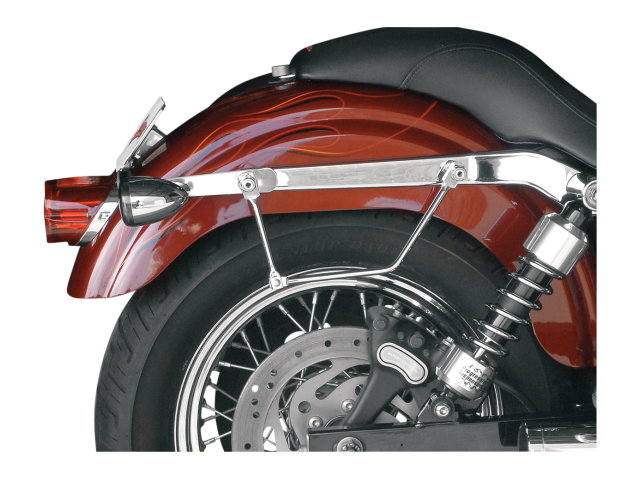 20
20
out of stock
Zodiac Deluxe 250 Wide Tire Kit For 1991-1999 Softail Models (756025) €2,232.34
out of stock
Zodiac Smooth Curved Right Side Drive Big Wheel 280/300 Series Wide Tire Kit For 2000-2006 Twin Cam Softail Models (722921) €2,002.49
out of stock
Zodiac Super Ass 230/250 Wide Tire Kit For 1991-1999 Evo Softail Models (236443)
€1,892. 42
42
out of stock
Zodiac Wide-Ass Wide Tire Kit With Offset Kit in Black Powder Coated Finish For 2012-2013 Dyna Models (730528) €2,060.03
available
Zodiac 200 Wide Ass Wide Tire Kit For 1991-1999 Evo Softail Models (236488) €1,141.55
out of stock
Zodiac Extra Wide Tire Kit 250 Wide Rear Tire in Black Powder Coated Finish For 2012-2013 Softail Models (722974)
€2,163.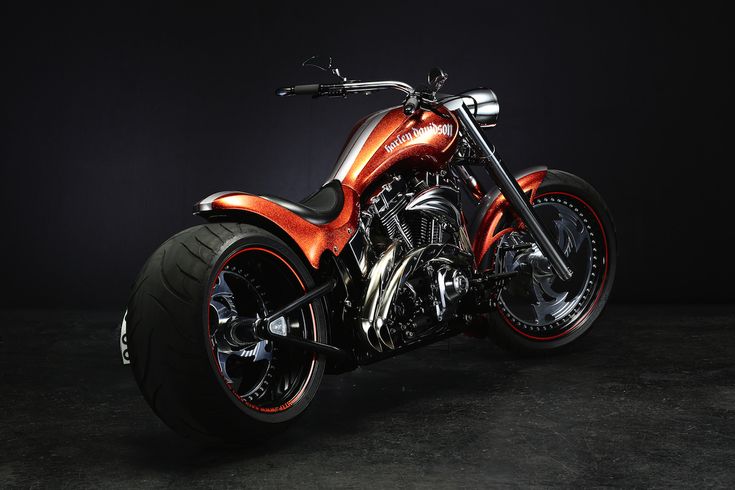 13
13
available (1)
Zodiac Wide Tire Kits 200/250 Wide Ass Swingarm Kit With Raw Swingarm For 1996-2005 Dyna Models (236890) €1,852.93
out of stock
Zodiac Radium 250 Basic Swingarm Kit (396050) €1,446.20
available
Ricks Motorcycles 300 Fat Ass Trick N Roll Swingarm Kit in Black Finish For 2008-2010 Softail Models (56-30625-8)
€4,499. 29
29
out of stock
Zodiac Smart Ass 330 Series Wheel Conversion Kit With Right Side Drive Transmission Builders Kit For 2000-2006 Evolution Softail Models (701801) €2,908.25
out of stock
Zodiac Smart Ass 300 Series Wheel Conversion Kit With Right Side Drive Transmission Builders Kit For 2000-2006 Evolution Softail Models (701811) €2,844.34
out of stock
Zodiac Smart Ass 330 Series Wheel Conversion Kit With Right Side Drive Transmission Builders Kit For 1991-1999 Evolution Softail Models (701821)
€2,771. 20
20
out of stock
Zodiac Smart Ass 300 Series Wheel Conversion Kit With Right Side Drive Transmission Builders Kit For 1991-1999 Evolution Softail Models (701831) €2,707.44
out of stock
Zodiac Smart Ass 330 Series Wheel Conversion Kit With Right Side Drive Transmission Conversion For 2000-2006 Evolution Softail Models (701800) €2,179.90
out of stock
Zodiac Smart Ass 300 Series Wheel Conversion Kit With Right Side Drive Transmission Conversion For 2000-2006 Evolution Softail Models (701810)
€1,996.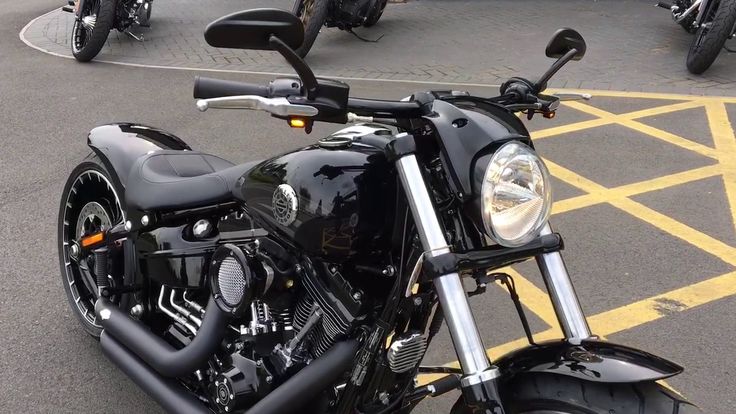 78
78
out of stock
Zodiac Smart Ass 330 Series Wheel Conversion Kit With Right Side Drive Transmission Conversion For 1994-1999 Evolution Softail Models (701820) €2,042.84
out of stock
Zodiac Smooth Curved Right Side Drive Big Wheel 330 Series Wide Tire Kit For 1994-1999 Evolution Softail Models (722924) €1,992.17
out of stock
Zodiac Smooth Curved Right Side Drive Big Wheel 280/300 Series Wide Tire Kit For 1994-1999 Evolution Softail Models (722923)
€1,809. 06
06
out of stock
Zodiac Smooth Curved Right Side Drive Big Wheel 330 Series Wide Tire Kit For 2000-2006 Twin Cam Softail Models (722922) €2,185.60
out of stock
Zodiac Complete 280 Series Wide Tire Kit For 2007-2011 Twin Cam Softail Models (711919) €1,989.04
out of stock
Zodiac Complete 280 Series Wide Tire Kit For 1991-1999 Evolution Softail Models (700978)
€1,749. 55
55
out of stock
Zodiac Complete 300 Series Wide Tire Kit For 2000-2006 Twin Cam Softail Models (700977) €1,739.35
out of stock
Zodiac Complete 6-Speed Conversion 280 Series Wide Tire Kit For 2000-2006 Twin Cam Softail Models (700940) €3,167.70
out of stock
Zodiac Wide-Ass Wide Tire Kit With Offset Kit in Black Powder Coated Finish For 2014-2017 Dyna Models (730530)
€2,354. 30
30
out of stock
Zodiac Wide-Ass Wide Tire Kit With Offset Kit in Raw Finish For 2014-2017 Dyna Models (730529) €2,268.59
out of stock
Zodiac Wide-Ass Wide Tire Kit With Offset Kit in Raw Finish For 2012-2013 Dyna Models (730527) €1,974.32
available
Zodiac Wide-Ass Wide Tire Kit With Offset Kit in Black Powder Coated Finish For 2006-2011 Dyna Models (730524)
€2,071. 01
01
available
Zodiac Ton Pels Signature Complete Smooth Curved Swingarm Kit With Primary Offset Kit in Black Powder Coated Finish For 2012-2013 Twin Cam Softail Frames (723704) €2,035.66
available
Zodiac Ton Pels Signature Complete Smooth Curved Swingarm Kit With Primary Offset Kit in Black Powder Coated Finish For 2007-2011 Twin Cam Softail Frames (723703) €2,046.64
available
Zodiac Extra Wide Tire Kit 250 Wide Rear Tire in Black Powder Coated Finish For 2014-2017 Softail Models (733929)
€2,457. 40
40
out of stock (1)
Zodiac Extra Wide Tire Kit 250 Wide Rear Tire in Raw Finish For 2014-2017 Softail Models (733928) €2,390.45
out of stock (1)
Zodiac Extra Wide Tire Kit 250 Wide Rear Tire in Raw Finish For 2012-2013 Softail Models (722928) €2,096.18
available (1)
Zodiac Extra Wide Tire Kit 250 Wide Rear Tire in Black Powder Coated Finish For 2008-2011 Softail Models (722975)
€2,174.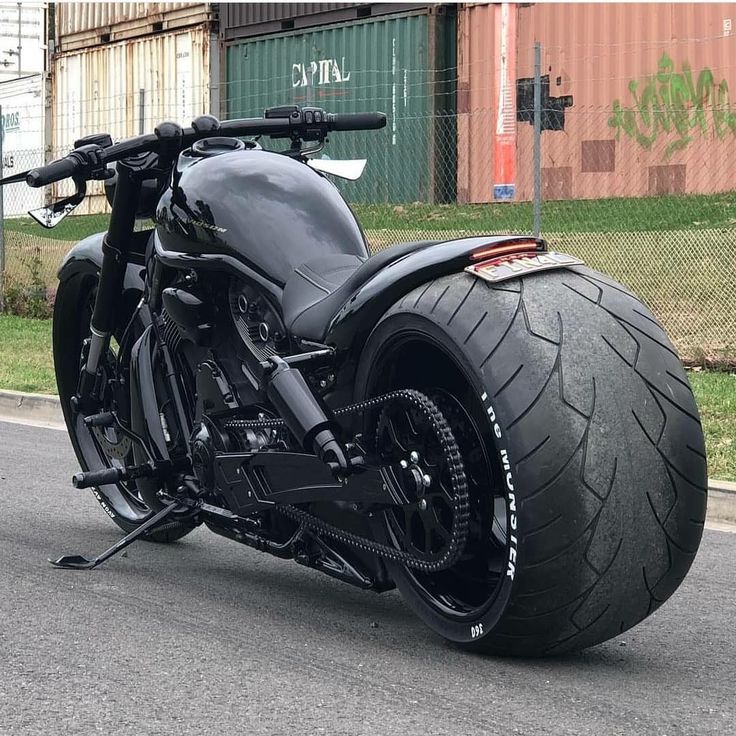 10
10
available (1)
Zodiac Extra Wide Tire Kit 250 Wide Rear Tire in Raw Finish For 2008-2011 Softail Models (722929) €2,107.15
available (1)
Zodiac Extra Wide Tire Kit 250 Wide Rear Tire in Black Powder Coated Finish For 2007 Softail Models (722969) €2,063.66
out of stock (1)
Zodiac Extra Wide Tire Kit 250 Wide Rear Tire in Raw Finish For 2000-2006 Softail Models (722077)
€2,060.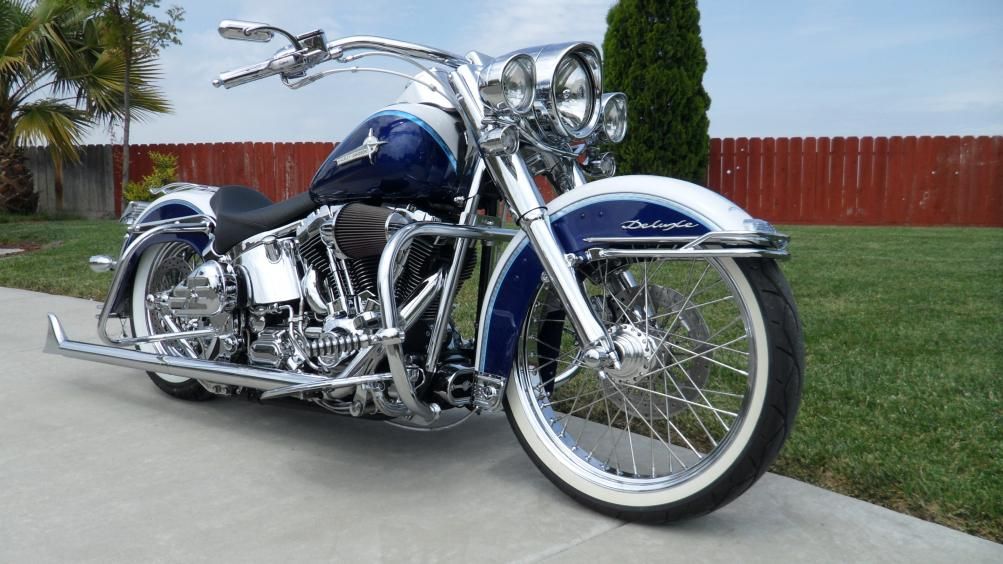 26
26
out of stock (1)
Zodiac Extra Wide Tire Kit 250 Wide Rear Tire in Raw Finish For 2007 Softail Models (722915) €2,202.37
out of stock (1)
Zodiac Radium 'Wide Ass' 200 Wide Tire Kit For 1995-2006 Touring Models (396101) €2,314.88
available
Custom Cycle Engineering Retro Fit Kit With Pivot Axle For Late Touring Models Swing Arms (748749)
€610. 82
82
available
Zodiac Silicone Beaded Outer Primary & Inspection Cover Kit For 1994 FXR & 1994-2006 FLH & FLT Models (700290) €43.04
available
Zodiac Ton Pels Signature Series Curved Swingarm 250 Wide Tire Kit in Raw Finish For 2014-2017 Twin Cam Softail Models (733920) €1,310.58
out of stock
Zodiac Ton Pels Signature Series Curved Swingarm 250 Wide Tire Kit With Primary Offset Kit in Raw Finish For 2012-2013 Twin Cam Softail Frames (722920)
€1,968. 71
71
available
Copyright ©2008-2023 ARH Custom Ltd.
WHAT MOTORCYCLE DO YOU HAVE
Find the right tires for your motorcycle
ВЫБЕРИТЕ БРЕНДADIVAAPRILIAATALAATKBAJAJBENELLIBETABIMOTABMWBRIXTONBUELLCAGIVACANONDALECF MOTOCPICZDAELIMDERBIDUCATIEBRENDRESS EMRENERGICAFANTICFYMGARELLIGAS GASGENERICGILERAHARLEY DAVIDSONHONDAHOREXHORWINHUSABERGHUSQVARNAHYOSUNGINDIANITALJETITTECOJAWAKAWASAKIKEEWAYKREIDLERKTMKYMCOLAMBRETTALAVERDALECSONLML - VESPAMAICOMALAGUTIMASHMBKMOTO GUZZIMOTO MORINIMV AGUSTAMZNORTONPEUGEOTPGOPIAGGIOPUCHRIEJUROYAL ENFIELDSACHSSASYSCATTOSFMSHERCOSIMSONSUZUKISWMSYMTGBTOKAIDOTOMOSTRIUMPHVECTRIXVICTORYVOGEVORVOXANWINKING MOTORYAMAHAZEROZÜNDAPP
ModelELW LiveWire EV 1 (> 2020)FLD Dyna Switchback FD 2 (> 2012)FLDE Deluxe ST 1 (> 2018)FLFB Fat Boy ST 1 (> 2018)FLFBS; ANV; ANX Fat Boy 114 ST 1 (> 2018) FLH Electra Glide FLT (1974-1979) FLH Electra Glide Revival FL3 (> 2021) FLHC Heritage Classic ST 1 (> 2018) FLHCS; ANV Heritage Classic 114 ST 1 (> 2018)FLHP Road King Police (> 2010)FLHP Road King Police FL 1 (> 2007)FLHPI Road King Police FL 1 (> 2006)FLHR Road King FL 1 (> 2007)FLHR Road King FL 2 (> 2008) FLHR Road King FL 3 (> 2016) FLHR Road King FL 3 (> 2017) FLHR Road King FL 3 (> 2020) FLHR Road King; ANV FL 2 (> 2012) FLHR; FLHRI Road King; EFI FL 1 (> 2000) FLHR; FLHRI Road King; EFI FLT; FL 1 (1994-2000)FLHRC Road King Classic FL 1 (> 2007)FLHRC Road King Classic FL 2 (> 2009)FLHRC Road King Classic FL 2 (> 2012)FLHRC Road King Classic FL 3 (> 2014)FLHRC Road King Classic FL 3 (> 2017)FLHRCI Road King Classic FLT / FL 1 (1998-2000)FLHRCI Road King Classic FL 1 (2000-2003)FLHRCI Road King Classic FL 1 (2004-2006)FLHRI Road King EFI FL 1 (> 2004)FLHRS Road King Custom FL 1 (> 2007) FLHRSE5; - ANV CVO Road King FL 2 (> 2013) FLHRSE; 3; 4 SE Road King FL 1; FL2 (2007-2009))FLHRSEI Road Glide FL 1 (> 2002)FLHRSI Road King Custom FL 1 (> 2004)FLHRXS Road King Special FL 3 (> 2018)FLHS Electra Glide Sport FLT (1988-1995)FLHT Electra Glide FL 2 (> 2010)FLHT Electra Glide FLT (1982-1987)FLHT Electra Glide Standard FL 1 (2000-2003)FLHT Electra Glide Standard FL 1 (> 2007)FLHT Electra Glide Standard FL 3 (> 2019)FLHT Electra Glide Standard FLT; FL 1 (1988-2000) FLHTC Electra Glide Classic FL 1 (2007-2009) FLHTC Electra Glide Classic; ABS FL 2 (2010-2011) FLHTC Electra Glide Classic; ABS FL 2 (> 2012) FLHTC(I) E-Glide Classic; EFI FLT; FL 1 (> 1983)FLHTCI Electra Glide Classic EFI FL 1 (> 2004)FLHTCSE; 2 Screamin Eagle El.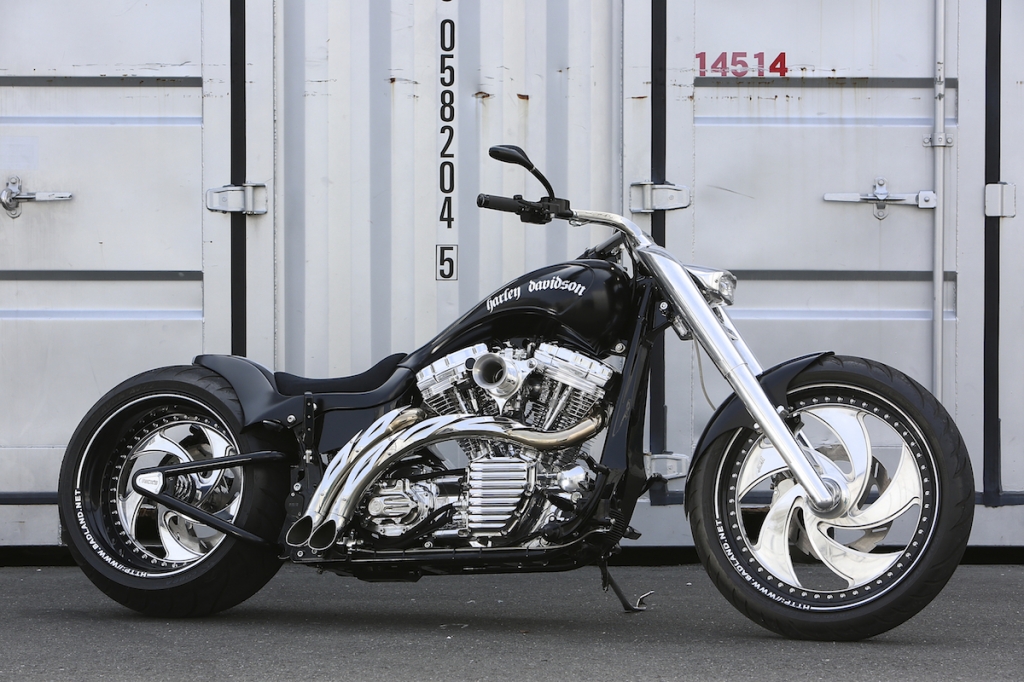 -Glide; Ultra Classic FL 1 (> 2004)FLHTCU Electra Glide Ultra Classic FL 3 (> 2014)FLHTCU Ultra Classic Electra Glide FL 2 (> 2012)FLHTCU Ultra Classic E-Glide FL 1 (> 2007)FLHTCU Ultra Classic Electra Glide FL 2 ( 2010-2011)FLHTCUI Ultra Classic E-Glide FLT; FL 1 (1996-2000) FLHTCUI Ultra Classic E-Glide FLT; FL1 (> 2000)FLHTCUI Ultra Classic Electra Glide EFI FL 1 (2004-2006)FLHTCUSE (5/6) CVO Ultra CL. EL. Glide FL 2 (> 2010)FLHTCUSE 5-8 CVO Ul. Cl. Electra Gl.; ANV FL 2 (2010-2013)FLHTCUSE Screamin Eagle El.-Glide Ultra Classic FL 1 (> 2006)FLHTCUSE2 SE Electra Glide Ultra Classic FL 1 (> 2007)FLHTCUSE³ SE Electra Glide Ultra Classic FL 1 (> 2008)FLHTI Electra Glide Standard EFI FL 1 (2004-2006) FLHTK Electra Glide Ultra Limited FL 3 (> 2014) FLHTK Ultra Limited 114 FL 3 (> 2020) FLHTK; ANV El.Gl. Ultra Limited FL 2 (> 2010) FLHTK; L; ANV Ult. limited; Low FL 3 (> 2017)FLHTKL Ultra Limited & Low FL 3 (> 2015)FLHTKSE CVO Limited FL 3 (> 2017)FLHTKSE CVO Limited FL 3 (> 2019))FLHTKSE CVO Ultra Limited FL 3 (> 2014)FLHTKSE; ANV CVO Limited FL 3 (> 2018) FLHTP Electra Glide Police (> 2010) FLHTP Electra Glide Police FL 1 (> 2008) FLHTU Ultra FLT; FL 1 (1983-1998)FLHTUI Ultra Classic Electra Glide EFI FLT (> 1996)FLHX Street Glide (16"/16" rim) FL 2 (> 2009)FLHX Street Glide (17"/16" rim) FL 2 (> 2009)FLHX Street Glide FL 1 (2007-2008)FLHX Street Glide FL 2 (2010-2011)FLHX Street Glide FL 2 (> 2012)FLHX/S Street Glide FL 3 (> 2014)FLHX;S; ANV Street Glide; Spec.
-Glide; Ultra Classic FL 1 (> 2004)FLHTCU Electra Glide Ultra Classic FL 3 (> 2014)FLHTCU Ultra Classic Electra Glide FL 2 (> 2012)FLHTCU Ultra Classic E-Glide FL 1 (> 2007)FLHTCU Ultra Classic Electra Glide FL 2 ( 2010-2011)FLHTCUI Ultra Classic E-Glide FLT; FL 1 (1996-2000) FLHTCUI Ultra Classic E-Glide FLT; FL1 (> 2000)FLHTCUI Ultra Classic Electra Glide EFI FL 1 (2004-2006)FLHTCUSE (5/6) CVO Ultra CL. EL. Glide FL 2 (> 2010)FLHTCUSE 5-8 CVO Ul. Cl. Electra Gl.; ANV FL 2 (2010-2013)FLHTCUSE Screamin Eagle El.-Glide Ultra Classic FL 1 (> 2006)FLHTCUSE2 SE Electra Glide Ultra Classic FL 1 (> 2007)FLHTCUSE³ SE Electra Glide Ultra Classic FL 1 (> 2008)FLHTI Electra Glide Standard EFI FL 1 (2004-2006) FLHTK Electra Glide Ultra Limited FL 3 (> 2014) FLHTK Ultra Limited 114 FL 3 (> 2020) FLHTK; ANV El.Gl. Ultra Limited FL 2 (> 2010) FLHTK; L; ANV Ult. limited; Low FL 3 (> 2017)FLHTKL Ultra Limited & Low FL 3 (> 2015)FLHTKSE CVO Limited FL 3 (> 2017)FLHTKSE CVO Limited FL 3 (> 2019))FLHTKSE CVO Ultra Limited FL 3 (> 2014)FLHTKSE; ANV CVO Limited FL 3 (> 2018) FLHTP Electra Glide Police (> 2010) FLHTP Electra Glide Police FL 1 (> 2008) FLHTU Ultra FLT; FL 1 (1983-1998)FLHTUI Ultra Classic Electra Glide EFI FLT (> 1996)FLHX Street Glide (16"/16" rim) FL 2 (> 2009)FLHX Street Glide (17"/16" rim) FL 2 (> 2009)FLHX Street Glide FL 1 (2007-2008)FLHX Street Glide FL 2 (2010-2011)FLHX Street Glide FL 2 (> 2012)FLHX/S Street Glide FL 3 (> 2014)FLHX;S; ANV Street Glide; Spec. FL 3 (> 2017)FLHXI Street Glide FL 1 (> 2006)FLHXS Street Glide Special FL 3 (2015-2016)FLHXS Street Glide Special FL 3 (> 2019))FLHXS; ANX Street Glide Special FL 3 (> 2018)FLHXSE CVO Street Glide FL 2 (2010-2013)FLHXSE CVO Street Glide FL 3 (2015-2016)FLHXSE CVO Street Glide FL 3 (2017-2017)FLHXSE CVO Street Glide FL 3 ( > 2018)FLHXSE²; ³; CVO Street Glide FL 2 (> 2011)FLS Softail Slim FS 2 (> 2012)FLSB Softail Sport Glide ST 1 ; ST 1-R (> 2018)FLSL Softail Slim ST 1 (> 2018)FLSS Softail Slim S FS 2 (> 2016)FLSTC Heritage Softail Classic FS 2 (> 2015)FLSTC Softail Heritage Classic FS 2 (> 2007)FLSTC; ANV Heritage Softail Classic FS 2 (2012-2015)FLSTF Fat Boy FS 2 (> 2007)FLSTF Fat Boy FXST (1990-1996) FLSTF(I) Fat Boy; FLSTC(I) Her. Softail Classic FS 2 (> 2003) FLSTF; B Fat Boy; special; ANV; Lo FS 2 (> 2012)FLSTFB Fat Boy Special FS 2 (> 2010)FLSTFBS Fat Boy S FS 2 (> 2016)FLSTFSE Screaming Eagle Fat Boy FS 2 (2005-2006)FLSTFSE² Screamin´ Eagle Fat Boy 2 FS 2 (> 2008)FLSTI Softail Heritage FS 2 (> 2006)FLSTN Softail Deluxe FS 2 (2007-2011)FLSTN Softail Deluxe FS 2 (>2011)FLSTNI Softail Deluxe EFI FS 2 (2005-2006)FLSTNSE CVO Softail Deluxe FS 2 (>2014) )FLSTS Heritage Springer FS 2 (> 2003)FLSTS Heritage Springer FXST (1997-2000) FLSTS Soft.
FL 3 (> 2017)FLHXI Street Glide FL 1 (> 2006)FLHXS Street Glide Special FL 3 (2015-2016)FLHXS Street Glide Special FL 3 (> 2019))FLHXS; ANX Street Glide Special FL 3 (> 2018)FLHXSE CVO Street Glide FL 2 (2010-2013)FLHXSE CVO Street Glide FL 3 (2015-2016)FLHXSE CVO Street Glide FL 3 (2017-2017)FLHXSE CVO Street Glide FL 3 ( > 2018)FLHXSE²; ³; CVO Street Glide FL 2 (> 2011)FLS Softail Slim FS 2 (> 2012)FLSB Softail Sport Glide ST 1 ; ST 1-R (> 2018)FLSL Softail Slim ST 1 (> 2018)FLSS Softail Slim S FS 2 (> 2016)FLSTC Heritage Softail Classic FS 2 (> 2015)FLSTC Softail Heritage Classic FS 2 (> 2007)FLSTC; ANV Heritage Softail Classic FS 2 (2012-2015)FLSTF Fat Boy FS 2 (> 2007)FLSTF Fat Boy FXST (1990-1996) FLSTF(I) Fat Boy; FLSTC(I) Her. Softail Classic FS 2 (> 2003) FLSTF; B Fat Boy; special; ANV; Lo FS 2 (> 2012)FLSTFB Fat Boy Special FS 2 (> 2010)FLSTFBS Fat Boy S FS 2 (> 2016)FLSTFSE Screaming Eagle Fat Boy FS 2 (2005-2006)FLSTFSE² Screamin´ Eagle Fat Boy 2 FS 2 (> 2008)FLSTI Softail Heritage FS 2 (> 2006)FLSTN Softail Deluxe FS 2 (2007-2011)FLSTN Softail Deluxe FS 2 (>2011)FLSTNI Softail Deluxe EFI FS 2 (2005-2006)FLSTNSE CVO Softail Deluxe FS 2 (>2014) )FLSTS Heritage Springer FS 2 (> 2003)FLSTS Heritage Springer FXST (1997-2000) FLSTS Soft.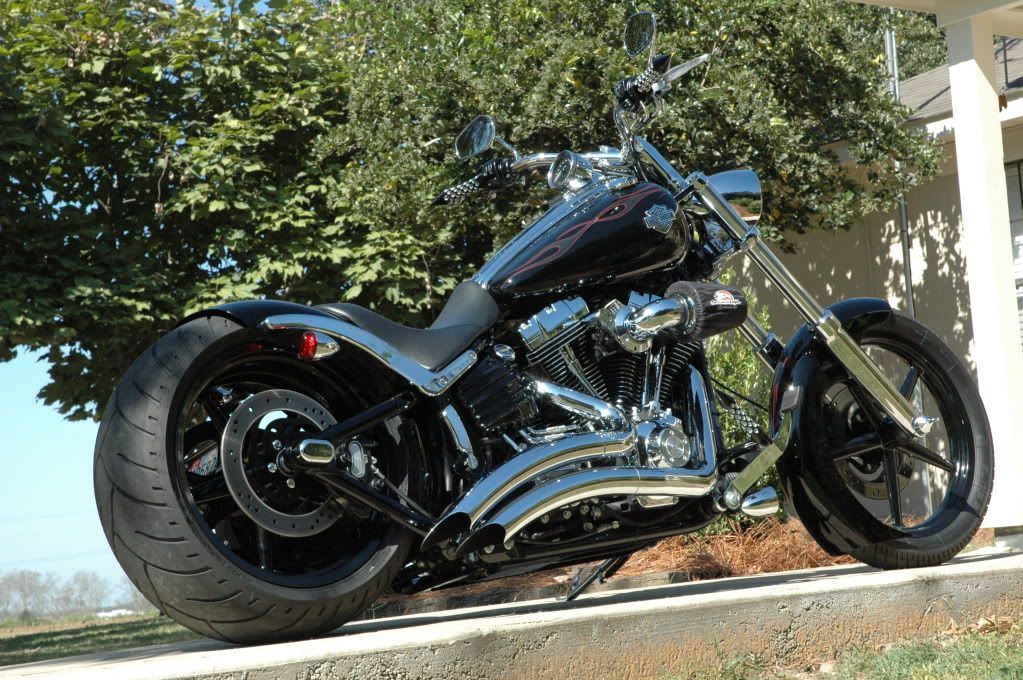 Her. Cust. Spr. FXST (1991-1999) FLSTS; FLSTF/-I; FLSTC/-I FS 2 (2000-2002) FLSTSB Cross Bones FS 2 (> 2009) FLSTSCI Softail Springer Classic EFI FS 2 (2005-2006) FLSTSE; 2; 3 CVO Softail Convertible FS 2 (> 2010) FLT; FLHT Electra Glide FLT; FL 1 (1983-2000) FLT; FLTC Tour Glide FLT; FL 1 (> 1982) FLTC Tour Glide Classic FLT; FL 1 (1982-1996) FLTR; FLTRI/U Road Glide; Injection F.L.T.; FL1 (> 1999)FLTRK Road Glide Limited 114 FL 3 (> 2020)FLTRSE³ CVO Road Glide Scr. Eagle FL 2 (> 2009)FLTRUSE Road Glide Ultra FL 3 (> 2016)FLTRUSE Road Glide Ultra FL 3 (> 2017)FLTRUSE CVO Road Glide Ultra FL 2 (> 2011)FLTRUSE CVO Road Glide Ultra FL 3 (> 2015)FLTRX Road Glide Custom FL 2 ( > 2010)FLTRXS Road Glide FL 3 (> 2018)FLTRXS Road Glide Special FL 3 (> 2015)FLTRXS Road Glide Special FL 3 (> 2018)FLTRXS Road Glide Special FL 3 (> 2019)FLTRXS Road Glide; Special FL 3 (> 2017)FLTRXSE Road Glide CVO FL 3 (> 2018)FLTRXSE; ²; - ANV CVO Road Glide Custom FL 2 (> 2012)FLTU Ultra Classic T.G. FLT; FL 1 (1982-1996) FLTUI Ultra Classic EFI FLT; FL 1 (> 1996) FX Super Glide FX (1978-1981) FXBB Street Bob ST 1; ST 1-R (> 2018)FXBBS Street Bob 114 ST 1 (> 2021)FXBR Breakout ST 1 (> 2018)FXBRS; ANX Breakout 114 ST 1 (> 2018)FXCW Rocker; FXCWC Rocker C FS 2 (> 2009)FXD 35 FD 2 (> 2006)FXD Dyna Super Glide FD 2 (> 2007)FXD Dyna Super Glide FXD (1995-1999)FXD; FDXXT; FXDL FD 1 (2000-2001)FXDB Dyna Glide Sturgis FXD (1991-1993)FXDB Dyna Street Bob FD 2 (> 2007)FXDB-Day Dyna Glide Daytona FXD (1992-1993)FXDB; FXDBC; FXDBB Dyna Street Bob FD 2 (> 2014)FXDBI Dyna Street Bob FD 2 (> 2006)FXDC Dyna Glide Custom FXD (1992-1993)FXDC Dyna Super Glide Custom FD 2 (> 2007)FXDC Dyna Super Glide Custom FD 2 (> 2014)FXDCI Dyna Super Glide Custom FD 1 (> 2005)FXDCI Dyna Super Glide Custom FD 2 (> 2006)FXDF Dyna Fat Bob FD 2 (> 2008)FXDF Dyna Fat Bob FD 2 (> 2012)FXDFSE 2 CVO Fat Bob FD 2 (> 2010)FXDI Super Glide FD 1 (2004-2005)FXDI Super Glide FD 2 (> 2006)FXDL Dyna Glide Low Rider FXD (1992-1999)FXDL Dyna Low Rider FD 2 (> 2007)FXDL Dyna Low Rider FD 2 (> 2014)FXDL(I) Dyna Glide Low Rider FD 2 (> 2006)FXDL(I) Dyna Low Rider FD 1 (2002- 2005)FXDLS Dyna Low Rider S FD 2 (> 2016)FXDR; S Softail 114 ST 1 (> 2019)FXDS-Con Dyna Glide Convertible FXD (1994-1998)FXDWG Dyna Wide Glide FD 1 (2000-2001)FXDWG Dyna Wide Glide FD 1 (2002-2003)FXDWG Dyna Wide Glide FD 2 ( > 2007)FXDWG Dyna Wide Glide FD 2 (> 2010)FXDWG Dyna Wide Glide FD 2 (> 2014)FXDWG Dyna Wide Glide FXD (1992-2000)FXDWGI Dyna Wide Glide FD 1 (> 2004)FXDWGI Dyna Wide Glide FD 2 (> 2006)FXDX Dyna Super Glide FD1 (2000-2003)FXDX Dyna Super Glide Sport FXD (1999-1999)FXDXI Dyna Super Glide Sport FD 1 (> 2004)FXDXT Dyna Super Glide T-Sport FD 1 (2002-2003)FXE Super Glide FX (1978-1987)FXEF Fat Bob FX (1981-1987)FXFB Fat Bob ST 1; ST 1-R (> 2018)FXFBS Fat Bob 114 ST 1 (> 2018)FXLR FXR (1986-1995)FXLR Low Rider ST 1; ST 1-R (> 2018)FXLRS Low Rider S 114 ST 1 (> 2020)FXLRS Low Rider S 117 (> 2022)FXLRST Low Rider ST 117 (> 2022)FXR Super Glide FXR (1982-1994)FXRD FXR (1982-1987)FXRS Low Rider FXR (1982-1995)FXRS Belt Drive FXR (1982-1994)FXRS Convertible FXR (1986-1995)FXRSL FXR (1982-1986)FXRST Low Rider EL Diablo ( > 2022)FXRT FXR (1982-1992)FXS Low Rider FX (1981-1987)FXS Softail Blackline FS 2 (> 2011)FXSB FXB (1981-1987)FXSB Softail Breakout FS 2 (2013-2017)FXSBSE CVO Softail Breakout FS 2 (> 2013)FXSE CVO Pro Street Breakout FS 2 (> 2016)FXST FXST (> 1983)FXST Softail FXST (> 1984)FXST Softail Standard FS 2 (> 2007)FXST Softail Standard FXST (> 1999)FXST Softail Standard ST 1 (> 2020)FXST(I) Softail Standard FS 2 (> 2003)FXST; FXSTS; FXSTB FS 2 (> 2000)FXSTB Night Train FS 2 (> 2009)FXSTB Night Train FXST (> 1998)FXSTB(I) Night Train FS 2 (> 2003)FXSTBI Night Train EFI FS 2 (> 2008)FXSTC Softail Custom FS 2 (> 2008)FXSTC Softail Custom FXST (> 1983)FXSTD(I) Softail Deuce FXST (> 1999)FXSTD/-I Softail Deuce FS 2 (2000-2006)FXSTI Softail Standard EFI FS 2 (> 2006)FXSTL/FLST ; C; N; Soft.
Her. Cust. Spr. FXST (1991-1999) FLSTS; FLSTF/-I; FLSTC/-I FS 2 (2000-2002) FLSTSB Cross Bones FS 2 (> 2009) FLSTSCI Softail Springer Classic EFI FS 2 (2005-2006) FLSTSE; 2; 3 CVO Softail Convertible FS 2 (> 2010) FLT; FLHT Electra Glide FLT; FL 1 (1983-2000) FLT; FLTC Tour Glide FLT; FL 1 (> 1982) FLTC Tour Glide Classic FLT; FL 1 (1982-1996) FLTR; FLTRI/U Road Glide; Injection F.L.T.; FL1 (> 1999)FLTRK Road Glide Limited 114 FL 3 (> 2020)FLTRSE³ CVO Road Glide Scr. Eagle FL 2 (> 2009)FLTRUSE Road Glide Ultra FL 3 (> 2016)FLTRUSE Road Glide Ultra FL 3 (> 2017)FLTRUSE CVO Road Glide Ultra FL 2 (> 2011)FLTRUSE CVO Road Glide Ultra FL 3 (> 2015)FLTRX Road Glide Custom FL 2 ( > 2010)FLTRXS Road Glide FL 3 (> 2018)FLTRXS Road Glide Special FL 3 (> 2015)FLTRXS Road Glide Special FL 3 (> 2018)FLTRXS Road Glide Special FL 3 (> 2019)FLTRXS Road Glide; Special FL 3 (> 2017)FLTRXSE Road Glide CVO FL 3 (> 2018)FLTRXSE; ²; - ANV CVO Road Glide Custom FL 2 (> 2012)FLTU Ultra Classic T.G. FLT; FL 1 (1982-1996) FLTUI Ultra Classic EFI FLT; FL 1 (> 1996) FX Super Glide FX (1978-1981) FXBB Street Bob ST 1; ST 1-R (> 2018)FXBBS Street Bob 114 ST 1 (> 2021)FXBR Breakout ST 1 (> 2018)FXBRS; ANX Breakout 114 ST 1 (> 2018)FXCW Rocker; FXCWC Rocker C FS 2 (> 2009)FXD 35 FD 2 (> 2006)FXD Dyna Super Glide FD 2 (> 2007)FXD Dyna Super Glide FXD (1995-1999)FXD; FDXXT; FXDL FD 1 (2000-2001)FXDB Dyna Glide Sturgis FXD (1991-1993)FXDB Dyna Street Bob FD 2 (> 2007)FXDB-Day Dyna Glide Daytona FXD (1992-1993)FXDB; FXDBC; FXDBB Dyna Street Bob FD 2 (> 2014)FXDBI Dyna Street Bob FD 2 (> 2006)FXDC Dyna Glide Custom FXD (1992-1993)FXDC Dyna Super Glide Custom FD 2 (> 2007)FXDC Dyna Super Glide Custom FD 2 (> 2014)FXDCI Dyna Super Glide Custom FD 1 (> 2005)FXDCI Dyna Super Glide Custom FD 2 (> 2006)FXDF Dyna Fat Bob FD 2 (> 2008)FXDF Dyna Fat Bob FD 2 (> 2012)FXDFSE 2 CVO Fat Bob FD 2 (> 2010)FXDI Super Glide FD 1 (2004-2005)FXDI Super Glide FD 2 (> 2006)FXDL Dyna Glide Low Rider FXD (1992-1999)FXDL Dyna Low Rider FD 2 (> 2007)FXDL Dyna Low Rider FD 2 (> 2014)FXDL(I) Dyna Glide Low Rider FD 2 (> 2006)FXDL(I) Dyna Low Rider FD 1 (2002- 2005)FXDLS Dyna Low Rider S FD 2 (> 2016)FXDR; S Softail 114 ST 1 (> 2019)FXDS-Con Dyna Glide Convertible FXD (1994-1998)FXDWG Dyna Wide Glide FD 1 (2000-2001)FXDWG Dyna Wide Glide FD 1 (2002-2003)FXDWG Dyna Wide Glide FD 2 ( > 2007)FXDWG Dyna Wide Glide FD 2 (> 2010)FXDWG Dyna Wide Glide FD 2 (> 2014)FXDWG Dyna Wide Glide FXD (1992-2000)FXDWGI Dyna Wide Glide FD 1 (> 2004)FXDWGI Dyna Wide Glide FD 2 (> 2006)FXDX Dyna Super Glide FD1 (2000-2003)FXDX Dyna Super Glide Sport FXD (1999-1999)FXDXI Dyna Super Glide Sport FD 1 (> 2004)FXDXT Dyna Super Glide T-Sport FD 1 (2002-2003)FXE Super Glide FX (1978-1987)FXEF Fat Bob FX (1981-1987)FXFB Fat Bob ST 1; ST 1-R (> 2018)FXFBS Fat Bob 114 ST 1 (> 2018)FXLR FXR (1986-1995)FXLR Low Rider ST 1; ST 1-R (> 2018)FXLRS Low Rider S 114 ST 1 (> 2020)FXLRS Low Rider S 117 (> 2022)FXLRST Low Rider ST 117 (> 2022)FXR Super Glide FXR (1982-1994)FXRD FXR (1982-1987)FXRS Low Rider FXR (1982-1995)FXRS Belt Drive FXR (1982-1994)FXRS Convertible FXR (1986-1995)FXRSL FXR (1982-1986)FXRST Low Rider EL Diablo ( > 2022)FXRT FXR (1982-1992)FXS Low Rider FX (1981-1987)FXS Softail Blackline FS 2 (> 2011)FXSB FXB (1981-1987)FXSB Softail Breakout FS 2 (2013-2017)FXSBSE CVO Softail Breakout FS 2 (> 2013)FXSE CVO Pro Street Breakout FS 2 (> 2016)FXST FXST (> 1983)FXST Softail FXST (> 1984)FXST Softail Standard FS 2 (> 2007)FXST Softail Standard FXST (> 1999)FXST Softail Standard ST 1 (> 2020)FXST(I) Softail Standard FS 2 (> 2003)FXST; FXSTS; FXSTB FS 2 (> 2000)FXSTB Night Train FS 2 (> 2009)FXSTB Night Train FXST (> 1998)FXSTB(I) Night Train FS 2 (> 2003)FXSTBI Night Train EFI FS 2 (> 2008)FXSTC Softail Custom FS 2 (> 2008)FXSTC Softail Custom FXST (> 1983)FXSTD(I) Softail Deuce FXST (> 1999)FXSTD/-I Softail Deuce FS 2 (2000-2006)FXSTI Softail Standard EFI FS 2 (> 2006)FXSTL/FLST ; C; N; Soft.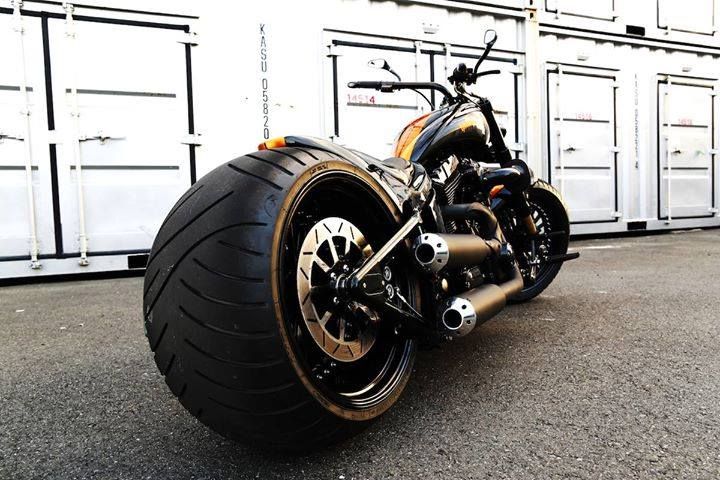 Herit.; Spec.; Cl. FXST (> 1986)FXSTS Softail Springer FXST (> 1988)FXSTS(I) Springer Softail FS 2 (> 2003)FXSTSB Bad Boy FXST (1995-1997)FXSTSI Softail Springer EFI FS 2 (>2008)FXSTSSE Screamin Eagle Softail Springer FS 2 (> 2007) FXWG Wide Glide FXD (1981-1987) Low Rider FXB (1981-1987) Nightster 975 RB1; RB1-R (> 2022)Pan America RA 1250 RA 1 (> 2021)Pan America RA 1250 S RA 1 (> 2021)Sportster S RA 1 (> 2021)Sturgis FXB (1981-1987)VRSC-A; -B; -D V-Rod VR 1 (> 2002) VRSCAW V-Rod VR 1 (> 2007) VRSCDX Night Rod; Special VR 1 (> 2007)VRSCF V-Rod Muscle VR 1 (> 2009))VRSCR Street Rod VR 2 (> 2006)VRSCSE Screamin´ Eagle V-Rod VR 1 (> 2006)VRSCSE² Screamin´Eagle V-Rod VR 1 (> 2006)VRSCX V-Rod VR 1 (> 2007)XG 750 A Street Rod XG 1 (> 2018)XG 750 Street 750 XG 1 (> 2015)XL 1200 C Sportster 1200 Custom XL 2 (2011-2012)XL 1200 C Sportster; 1200 Custom XL 2 (2004-2010)XL 1200 C; CA; CB Sportster 1200 Custom; ANV XL 2 (> 2013) XL 1200 C; Sportster 1200 Custom XL/2; XL 1 (1996-2000) XL 1200 C; Sportster 1200 Custom XL/2; XL 1 (2000-2003)XL 1200 CX Roadster XL 2 (> 2016)XL 1200 L Sportster 1200 Low XL 2 (> 2010)XL 1200 N Nightster XL 2 (> 2008)XL 1200 R Sportster 1200 Roadster XL 2 (> 2006) )XL 1200R; L Sportster XL 2 (> 2004)XL 1200 S Sportster XL/2; XL 1 (1996-2003)XL 1200 T Sportster Super Low XL 2 (> 2015)XL 53 C Sportster 883 Custom XL 1 (2000-2004)XL 53 C Sportster 883 Custom XL/2 (1998-2000)XL 883 C Sportster; 883 Customer XL 1 (> 2004)XL 883 L Super Low XL 2 (> 2011)XL 883 N Sportster Iron XL 2 (> 2009)XL 883 R Roadster; Sportster XL 2 (> 2011)XL 883 Sportster; Hugger XL/2; XL/1 (> 2000) XL 883 Sportster; Hugger XL/2; XL/1 (> 2001) XL 883; L; R Sportster 883 XL 2 (> 2003) XL Sportster 883 R XL 2 (> 2007) XL(H) 53 C; Sportster 883 Custom XL 2 (2004-2007) XL1200 NS Iron XL 2; XL 2-R (> 2018) XL1200 V Sportster Seventy-Two XL 2 (> 2012) XL1200 XS Forty-Eight Special XL 2; XL 2-R (> 2018) XL1200X Sportster Forty-Eight XL 2 (> 2010) XL1200X Sportster Forty-Eight XL 2 (> 2012) XLH 1000; XLH 1100; Sportster XL/2 (1982-1987)XLH 1200 C XL 1; XL 2 (1996-2000) XLH 1200 C XL 1; XL 2 (> 2000) XLH 1200 Sportster XL/2 (1982-1987) XLH 1200; SXL/2; XL/1 (> 1987) XLH 883 XL/2; XL/1 (> 1982)XLH Sportster XL/1 (1981-1984)XLS Roadster XL/1 (1981-1984)XLS Roadster XL/2 (1982-1987)XLX XL/2 (1982-1987)XR 1000 XL ( 1983-1984)XR 1200 XR 1 (> 2010)XR 1200 XR 1 (> 2008)
Herit.; Spec.; Cl. FXST (> 1986)FXSTS Softail Springer FXST (> 1988)FXSTS(I) Springer Softail FS 2 (> 2003)FXSTSB Bad Boy FXST (1995-1997)FXSTSI Softail Springer EFI FS 2 (>2008)FXSTSSE Screamin Eagle Softail Springer FS 2 (> 2007) FXWG Wide Glide FXD (1981-1987) Low Rider FXB (1981-1987) Nightster 975 RB1; RB1-R (> 2022)Pan America RA 1250 RA 1 (> 2021)Pan America RA 1250 S RA 1 (> 2021)Sportster S RA 1 (> 2021)Sturgis FXB (1981-1987)VRSC-A; -B; -D V-Rod VR 1 (> 2002) VRSCAW V-Rod VR 1 (> 2007) VRSCDX Night Rod; Special VR 1 (> 2007)VRSCF V-Rod Muscle VR 1 (> 2009))VRSCR Street Rod VR 2 (> 2006)VRSCSE Screamin´ Eagle V-Rod VR 1 (> 2006)VRSCSE² Screamin´Eagle V-Rod VR 1 (> 2006)VRSCX V-Rod VR 1 (> 2007)XG 750 A Street Rod XG 1 (> 2018)XG 750 Street 750 XG 1 (> 2015)XL 1200 C Sportster 1200 Custom XL 2 (2011-2012)XL 1200 C Sportster; 1200 Custom XL 2 (2004-2010)XL 1200 C; CA; CB Sportster 1200 Custom; ANV XL 2 (> 2013) XL 1200 C; Sportster 1200 Custom XL/2; XL 1 (1996-2000) XL 1200 C; Sportster 1200 Custom XL/2; XL 1 (2000-2003)XL 1200 CX Roadster XL 2 (> 2016)XL 1200 L Sportster 1200 Low XL 2 (> 2010)XL 1200 N Nightster XL 2 (> 2008)XL 1200 R Sportster 1200 Roadster XL 2 (> 2006) )XL 1200R; L Sportster XL 2 (> 2004)XL 1200 S Sportster XL/2; XL 1 (1996-2003)XL 1200 T Sportster Super Low XL 2 (> 2015)XL 53 C Sportster 883 Custom XL 1 (2000-2004)XL 53 C Sportster 883 Custom XL/2 (1998-2000)XL 883 C Sportster; 883 Customer XL 1 (> 2004)XL 883 L Super Low XL 2 (> 2011)XL 883 N Sportster Iron XL 2 (> 2009)XL 883 R Roadster; Sportster XL 2 (> 2011)XL 883 Sportster; Hugger XL/2; XL/1 (> 2000) XL 883 Sportster; Hugger XL/2; XL/1 (> 2001) XL 883; L; R Sportster 883 XL 2 (> 2003) XL Sportster 883 R XL 2 (> 2007) XL(H) 53 C; Sportster 883 Custom XL 2 (2004-2007) XL1200 NS Iron XL 2; XL 2-R (> 2018) XL1200 V Sportster Seventy-Two XL 2 (> 2012) XL1200 XS Forty-Eight Special XL 2; XL 2-R (> 2018) XL1200X Sportster Forty-Eight XL 2 (> 2010) XL1200X Sportster Forty-Eight XL 2 (> 2012) XLH 1000; XLH 1100; Sportster XL/2 (1982-1987)XLH 1200 C XL 1; XL 2 (1996-2000) XLH 1200 C XL 1; XL 2 (> 2000) XLH 1200 Sportster XL/2 (1982-1987) XLH 1200; SXL/2; XL/1 (> 1987) XLH 883 XL/2; XL/1 (> 1982)XLH Sportster XL/1 (1981-1984)XLS Roadster XL/1 (1981-1984)XLS Roadster XL/2 (1982-1987)XLX XL/2 (1982-1987)XR 1000 XL ( 1983-1984)XR 1200 XR 1 (> 2010)XR 1200 XR 1 (> 2008)
The choice of tires for your HARLEY DAVIDSON must be carefully considered, taking into account various factors, including the type of motorcycle, its parameters, driving style and the type of surface on which the tires will be used.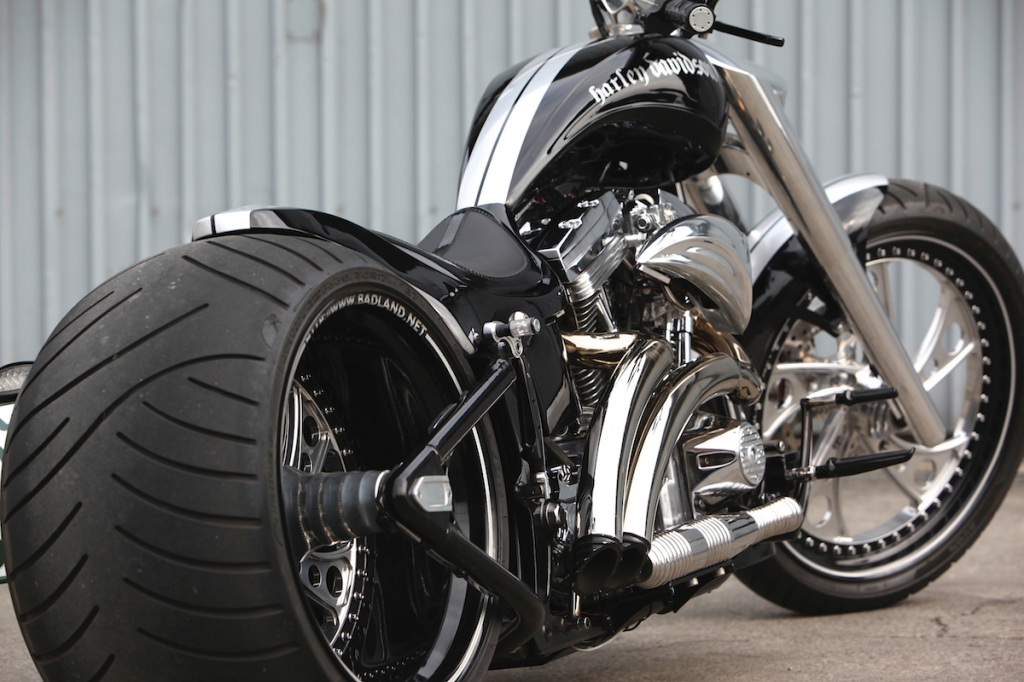 To help you make this choice, Pirelli has created an extensive range of HARLEY DAVIDSON tires designed to provide excellent product performance in all conditions and absolute safety. In the expanded Pirelli catalog you will find a range of tires for HARLEY DAVIDSON designed to provide unrivaled performance on the road. Pirelli tires for HARLEY DAVIDSON are the perfect combination of technology, innovation and special rubber compounds that effectively handle all weather conditions. The tread patterns are designed to guarantee maximum straight and cornering grip, low risk of hydroplaning on wet roads, short braking distances and low fuel consumption. Special data sheets for each HARLEY DAVIDSON will allow you to better understand the characteristics of each tire and compare options. Once you've decided on your HARLEY DAVIDSON tires, please contact an authorized Pirelli dealer for more information and to complete your purchase. When it's time to change the tires on your HARLEY DAVIDSON, choose Pirelli's quality and safety.
To help you make this choice, Pirelli has created an extensive range of HARLEY DAVIDSON tires designed to provide excellent product performance in all conditions and absolute safety. In the expanded Pirelli catalog you will find a range of tires for HARLEY DAVIDSON designed to provide unrivaled performance on the road. Pirelli tires for HARLEY DAVIDSON are the perfect combination of technology, innovation and special rubber compounds that effectively handle all weather conditions. The tread patterns are designed to guarantee maximum straight and cornering grip, low risk of hydroplaning on wet roads, short braking distances and low fuel consumption. Special data sheets for each HARLEY DAVIDSON will allow you to better understand the characteristics of each tire and compare options. Once you've decided on your HARLEY DAVIDSON tires, please contact an authorized Pirelli dealer for more information and to complete your purchase. When it's time to change the tires on your HARLEY DAVIDSON, choose Pirelli's quality and safety. nine0003
nine0003
The selected type of operating conditions will automatically display Pirelli tires based on the specified specifications and homologations; as well as a list of sizes that fit this kit.
The information provided here is for guidance only. Before buying tires, it is better to consult with the seller or a Pirelli representative for clarification of all technical characteristics and possible replacement options. nine0003
Text: Andrey Rodionov, Dmitry Kolchugin
Photo: Nikita Kolobanov, Andrey Rodionov, rubber manufacturers
The tasks facing motorcycle tire developers are extremely complex and controversial . On the one hand, tires must effectively transmit engine power, prevent stalls and slips, provide feedback and allow the rider to “feel the road”. On the other hand, to ensure a minimum tire wear rate, and make it uniform across the entire width of the working surface. Therefore, when choosing a tire for certain operating conditions, we will inevitably have to sacrifice something. nine0003
On the other hand, to ensure a minimum tire wear rate, and make it uniform across the entire width of the working surface. Therefore, when choosing a tire for certain operating conditions, we will inevitably have to sacrifice something. nine0003
Our task is greatly facilitated by the experience of global motor rubber manufacturers. Based on the collected data, they have already calculated the optimal ratio of tire characteristics for different conditions, and are ready to offer us ready-made solutions.
There is a great variety of motor rubber models designed for a variety of operating conditions. In this article we will consider its main types. Naturally, the focus will be on road models. We will touch on tires for motocross and enduro only in passing, since in order to fully cover this topic, we will need to write a separate voluminous material. nine0021 So, let's get started...
Motor rubber classification.
First, some boring theory.
Any reference book will tell you that motorcycle tires are Diagonal and Radial.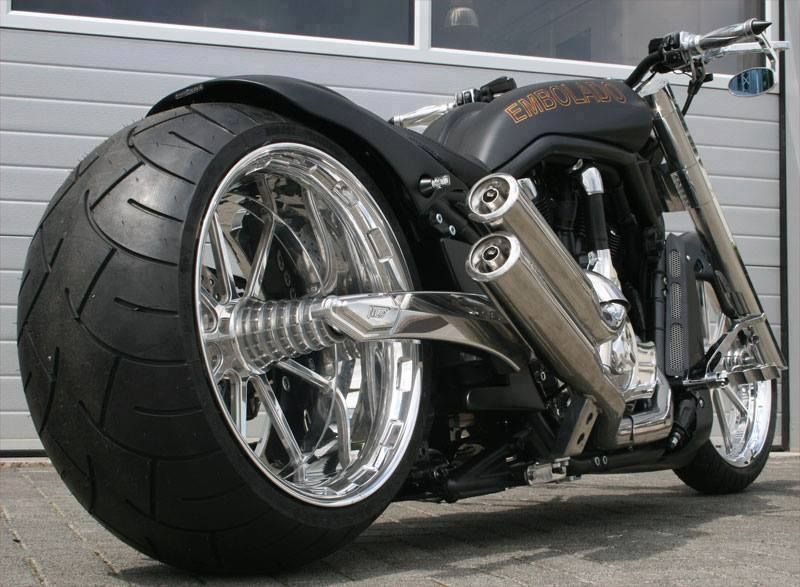 The carcass of the diagonal motor rubber is made of cross layers of cord, which are directed diagonally from one side of the tire to the other. Each subsequent layer of cord is located at an angle of 90 degrees to the previous one. In some tire models, another layer is applied over the cross plies of the cord, directed in the direction of rotation of the tire. Such a layer is called a Belt, and the design of such a tire is Diagonally Belted. In a radial tire, the plies of the cord are located “radially”, at an angle of 90 degrees to the direction of tire rotation.
The carcass of the diagonal motor rubber is made of cross layers of cord, which are directed diagonally from one side of the tire to the other. Each subsequent layer of cord is located at an angle of 90 degrees to the previous one. In some tire models, another layer is applied over the cross plies of the cord, directed in the direction of rotation of the tire. Such a layer is called a Belt, and the design of such a tire is Diagonally Belted. In a radial tire, the plies of the cord are located “radially”, at an angle of 90 degrees to the direction of tire rotation.
Cruiser and custom tires.
Bias tires are well suited for cruiser class motorcycles. Their sidewalls resist loads and impacts much better, so a heavily loaded motorcycle with a passenger on board is not a problem for such tires. But for powerful and fast power cruisers such as the Yamaha V-MAX II and Harley Davidson V-Rod, radial tires are more suitable. Their sidewalls are not as strong, so the height of such tires, as a rule, is much less.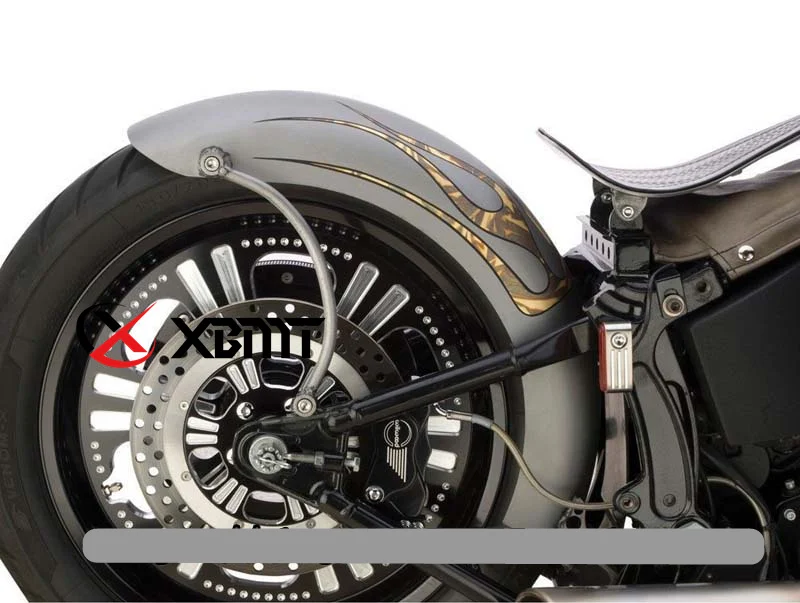 But they are less subject to internal heating and wear during movement, especially at high speeds. nine0003
But they are less subject to internal heating and wear during movement, especially at high speeds. nine0003
Tires for vintage motorcycles.
There are many different types. Starting from vintage tires with a classic look for some Royal Enfield and old school custom, and ending with the high-tech Pirelli Phantom Sportscomp, which differs from most modern tires only in an elaborate tread pattern.
Small displacement tires.
Another class of tires that includes both radial and bias-ply tires is the small displacement tire. The popularity of checks and three hundred among young people forced the designers to produce tires for the most varied use of these motorcycles. Starting from "diagonals" for lovers of leisurely travel around Moscow (sometimes together), and ending with sports radial tires for those who do not get out of the karting track. After all, radial tires are much better suited for fast and accurate aerobatics.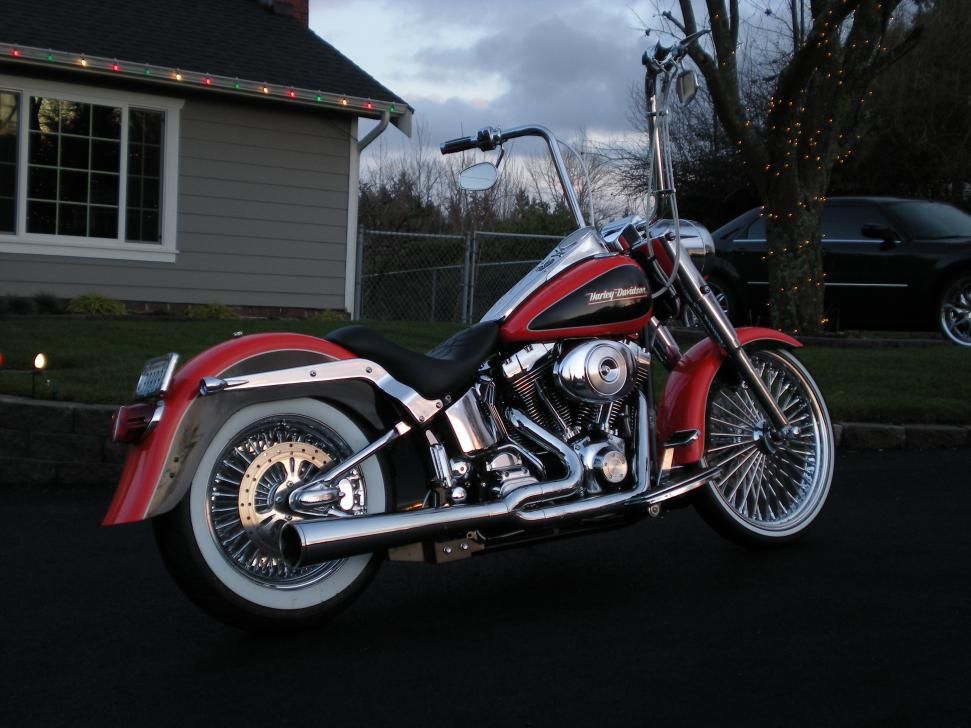 Their advantages are especially relevant in motorsport. nine0003
Their advantages are especially relevant in motorsport. nine0003
Racing slicks
A highly specialized product designed for competition and training of professional and amateur athletes, exclusively on sports tracks. Not approved for use on public roads. Most often they have a smooth surface without grooves and patterns, in order to achieve the maximum area of the wheel contact patch. The type of tire without grooves is commonly called - Slick. The sidewall shape of the racing tires is also optimized to maintain traction in extreme lean angles of the motorcycle when cornering not only with the knees, but also with the elbows. They have an extremely limited resource. As a rule, they are subject to replacement after a race run or practice session. Provides unparalleled traction. nine0003
In addition to their appearance, these tires are characterized by a special temperature regime. Operating temperature: 80-100°C An unheated tire of this type differs significantly in its properties from the same wheel brought to operating temperature. Accordingly, all its high characteristics appear only after warming up to the specified parameters. That is why in sports competitions so much attention is paid to warming up the rubber with the help of special “warmers”, and during the so-called warm-up lap preceding the combat race. nine0003
Accordingly, all its high characteristics appear only after warming up to the specified parameters. That is why in sports competitions so much attention is paid to warming up the rubber with the help of special “warmers”, and during the so-called warm-up lap preceding the combat race. nine0003
Racing slicing
In some racing series, the use of slick tires - slicks - is prohibited for marketing reasons, etc. Therefore, most manufacturers produce racing tires with the minimum number of grooves necessary to comply with the regulations of these competitions. Otherwise, these are, as a rule, the same uncompromising racing tires that are not intended for public roads. The formal exception is the Pirelli Diablo Supercorsa SC. The Pirelli website states that this model is suitable for driving on public roads. nine0003
But those who have experience with this rubber know that this is an exclusively racing product, not much different from classmates. Caution for newbies. If you decide to use such tires in the city, counting on an unprecedented grip, you will be bitterly disappointed. It is almost impossible to warm them up to operating temperature on public roads. Even after a series of accelerations and decelerations, the sidewalls will remain cold, and you will be indescribably surprised to go into slippery with a completely childish tilt of the motorcycle. For this reason, you should not buy Dunlop D212 and Pirelli Diablo Supercorsa SC for next to nothing with a still “live” middle from riders after the track. Especially if you have never encountered this rubber model before, even on a karting track. nine0003
Caution for newbies. If you decide to use such tires in the city, counting on an unprecedented grip, you will be bitterly disappointed. It is almost impossible to warm them up to operating temperature on public roads. Even after a series of accelerations and decelerations, the sidewalls will remain cold, and you will be indescribably surprised to go into slippery with a completely childish tilt of the motorcycle. For this reason, you should not buy Dunlop D212 and Pirelli Diablo Supercorsa SC for next to nothing with a still “live” middle from riders after the track. Especially if you have never encountered this rubber model before, even on a karting track. nine0003
Street legal racing cut
The main difference from the previous class is in the temperature regime. These tires hold up much better when cold and don't run as hot. As a rule, it is: 60-80°C. Accordingly, their maximum grip properties are slightly lower. But the best grip in a cold state allows them to be allowed on public roads.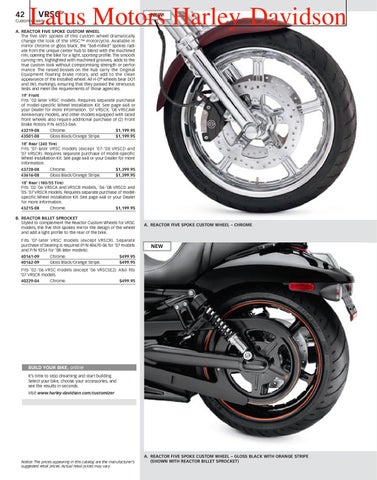 And if you get to the training track on your own, then these tires are the best choice. These are the fastest tires allowed on city streets. nine0003
And if you get to the training track on your own, then these tires are the best choice. These are the fastest tires allowed on city streets. nine0003
The presence of this class of tires is primarily due to the specific requirements of amateur competitions. In such races, for reasons of economy, the use of heating pads is often prohibited. And so that novice racers do not get killed in the very first turn due to cold tires, the regulations require the use of road tires approved for operation at the DOP.
Racing rain tires
A separate class of racing tires is rain racing tires. Their task is to completely remove water from the contact patch, including when the motorcycle is tilted, as well as the maximum level of grip on wet asphalt. When driving on dry roads, such tires are subject to rapid wear, as they have a very soft composition. nine0003
Supersport tires
Designed for more aggressive driving than conventional road racing tires. But in terms of grip, they still fall short of street legal racing “cutting”.
But in terms of grip, they still fall short of street legal racing “cutting”.
Sport road tires
Designed primarily for powerful sports and urban motorcycles. Fully suitable for operation on public roads. The available grooves, most often, are enough to drain water from the contact patch in case of light rain. At the same time, such tires retain most of the positive qualities of their brutal racing relatives on the sports track. What's more, the amateur rider who trains once a week doesn't have to worry about reaching the optimum operating temperature and pressure. nine0003
Sports tires reach operating conditions much faster than racing tires, and their parameters in a warm and “cold” state do not differ so significantly. But you should not be under any illusions about the ultimate capabilities of such tires in a race, even an amateur one. The fantastic traction properties of racing tires brought to operating temperature are unattainable for sports tires. Therefore, in extreme conditions, be careful and keep your sobriety of mind.
Therefore, in extreme conditions, be careful and keep your sobriety of mind.
But the resource of such tires is not limited to a couple of races on the highway, and ranges from 4000 km. up to 7000 km., depending on the engine power, the owner's piloting style, and his love to burn rubber, performing rolling burnout. So, sports tires are a reasonable choice for the owner of a sports or fast road bike, looking at the track or karting track 1-2 times a month to brush up on the relevant skills. nine0003
Road touring tires
For this type of rubber, its resource is of particular importance, since it is such rubber that is most often used by motorcycle travelers in their many thousands of runs around cities and countries. In addition to long routes with different quality of coverage, on which the tourist tire must be equally predictable and safe, long trips are usually associated with a large mass of transported belongings, without which the life of a motorcycle tourist becomes dull and bleak. And the tourist motorcycles themselves, in terms of their curb weight, are increasingly approaching diesel locomotives. nine0003
And the tourist motorcycles themselves, in terms of their curb weight, are increasingly approaching diesel locomotives. nine0003
Therefore, a road touring tire must not only withstand long runs, but also withstand high loads well. At the same time, the requirements for the quality of adhesion give way to high predictability and "motorcycle feel" that allows even an inexperienced motorcyclist to feel and stop the development of slips and drifts at an early stage. The main task is not to pass the route at the highest speed, but to reach the final destination in the safest possible mode, while maintaining control over the motorcycle in any weather. nine0003
Accordingly, the water drainage grooves in such tires are more developed. And some models are specially optimized to maintain performance on wet roads. The resource of such tires, as a rule, ranges from 10,000 to 20,000 km. Best of all road-touring tires are suitable for city and travel on road and tourist motorcycles. Moreover, for the latter, given their large mass, special “reinforced” versions of tires are sometimes produced.
Dual purpose tires
The high popularity of enduro motorcycles in Europe is beyond the understanding of domestic brains. Especially if you take into account the average European quality of the road surface. But the fruits of this popularity can be enjoyed by our compatriots who operate all-terrain vehicles.
Tires for "parquet" crossovers
The real heyday of this class of tires happened immediately after the appearance in 2010 of the Ducati Multistrada motorcycle, as well as many of its followers. Just like the Porsche Cayenne and BMW X5 crossovers, these bikes are only nightmares for serious off-road use. But nothing prevents them from amusing the pride of the owners on a trampled primer. nine0003
But back to tires. In terms of its composition and parameters, this is, as a rule, a specialized tourist rubber capable of withstanding long distances, having a tread that provides the minimum necessary “hook” on unpaved areas. It is designed for large and powerful motorcycles, has a high load capacity and speed index, is comfortable, provides good handling at high speeds and wet roads.
It is designed for large and powerful motorcycles, has a high load capacity and speed index, is comfortable, provides good handling at high speeds and wet roads.
The resource of such tires, as a rule, reaches 20,000 km. And also, due to the obligatory presence of exclusively road dimensions in such models, every city madman can put them on his blue Drozd and rush off towards Magadan. nine0003
All-terrain tires
But, unlike in the automotive industry, the rise of parquet crossover motorcycles hasn't dampened the popularity of true touring enduros like the Bavarian Great Goose. Such motorcycles can travel on roads with any surface, as well as without it.
Therefore, tires designed for driving on asphalt and dirt in a ratio of 50/50 (as an option: 60/40) are produced by every world-class motor rubber manufacturer. Their task is to provide an acceptable grip on both dirt and asphalt roads. nine0003
The resource of such tires, as a rule, ranges from 13,000 to 15,000 km.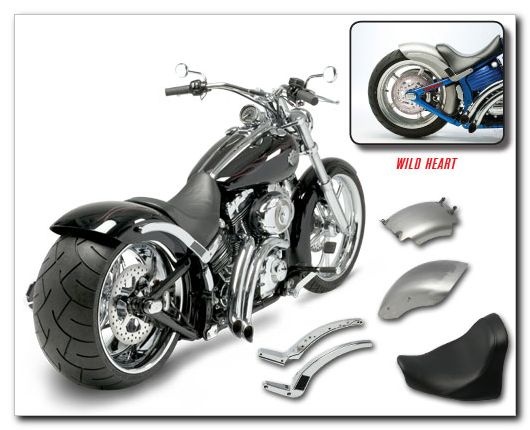 It should be noted that the higher the rubber resource, the larger the contact patch of the tread with the coating. Therefore, with the growth of off-road characteristics of tires, the resource decreases. Also, the harder the composition of the rubber, the higher its survivability. But grip on wet roads with hard rubber will be noticeably worse.
It should be noted that the higher the rubber resource, the larger the contact patch of the tread with the coating. Therefore, with the growth of off-road characteristics of tires, the resource decreases. Also, the harder the composition of the rubber, the higher its survivability. But grip on wet roads with hard rubber will be noticeably worse.
Off-road tires
The most off-road, among the “civilian” tires, designed for the most desperate travelers and rally marathon participants. They allow you not to think about the presence of any road under the wheels. nine0003
These tires have a very strong carcass that provides the necessary margin of safety, which allows you to move on some models even on a punctured wheel. Often, a slight reduction in pressure will achieve more even wear and improve traction on wet pavement.
The resource of such tires is approximately 6000 - 12000 km.
Off-Road Sport Tires
Not for highway use only are not certified and are not approved for OPT. These are special tires for motocross and enduro, not designed for high speeds. True, there are separate models from this category that are approved for use on the roads, but this is more of a nod to consumers. The resource on the roads of these tires is small, road characteristics, such as handling and braking, also leave much to be desired. nine0003
These are special tires for motocross and enduro, not designed for high speeds. True, there are separate models from this category that are approved for use on the roads, but this is more of a nod to consumers. The resource on the roads of these tires is small, road characteristics, such as handling and braking, also leave much to be desired. nine0003
Therefore, we can rather talk only about the possibility of driving on these tires to real off-road without changing shoes. They have a diagonal design and are designed for use with chambers or mousses. They are mainly produced in dimensions R21, R19 and R18 and very rarely - R17. These tires can be divided into motocross tires and enduro tires.
In each of these segments there are sports-oriented models, and amateur formats are more versatile (usually these are old models that no longer satisfy athletes, but are in demand). Unlike many other types of motor tires, motocross and enduro tires are consumables. They must work out their task with maximum effect and, by and large, the residual resource is not of interest to manufacturers.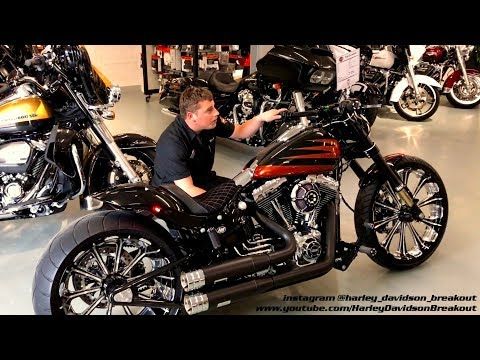 nine0003
nine0003
Motocross Tires
Motocross is a very intense, short ride with high shock and alternating loads from acceleration to deceleration on a pre-prepared track with relatively uniform soil. To do this, the cross tire has a hard cord, high and aggressive lugs and a relatively hard rubber compound.
Motocross tires are available in different types for different types of terrain. They differ in the tread pattern and the composition of the rubber used. The main pattern: on hard ground, tires with wide lugs and more elastic rubber are used, on soft ground - with rare tread blocks and harder rubber. The tire pressure used is 1.2-0.8 kPa: the softer the ground, the higher the pressure. nine0003
Enduro competition tires
Enduro competitions include other additional types of obstacles: logs, fords, stones, rocks. To effectively overcome them, tires are used that combine the properties of tires for motocross - for overcoming unpaved areas, and trial - for other obstacles.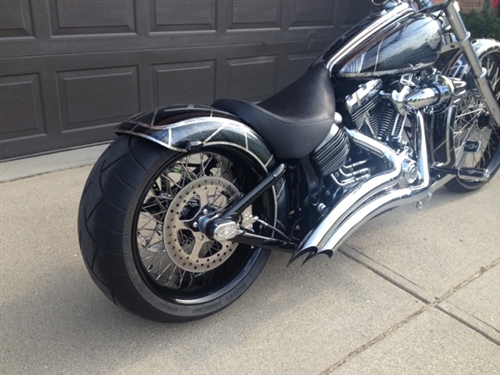 For this, a very soft tire carcass is used, the maximum width and elasticity of the rubber compound for better grip.
For this, a very soft tire carcass is used, the maximum width and elasticity of the rubber compound for better grip.
The FIM European regulation for enduro has a limit on the height of the tread used, so the block height on these tires is lower than on motocross tires. These tires are used with mousses instead of tubes to maximize the effect of low pressure inside the tire without the fear of blowing or spinning the tire. nine0003
All-terrain tires
Also, most manufacturers produce all-round types of tires, amateur format, combining cross-country and enduro characteristics. (Usually these are old models that no longer satisfy athletes, but are in demand.) Among the tires for enduro, there are also models of a universal format that are suitable for use in both cartri-cross and enduro, can be used with tubes and mousse.
Running in road tires
Having bought and installed new tires on a motorcycle, do not rush to check its adhesion at maximum speeds and angles of inclination. Each new tire must undergo a run-in, during which its carcass, bandage and rubber layer are run in and reach the design characteristics. It is believed that the distance is 100 km. enough to break in a new wheel. After passing it, do not forget to check the pressure in the wheel, as well as inspect it for proper fit and possible geometry violations. If there are no problems, the wheel is ready for full operation. nine0003
Each new tire must undergo a run-in, during which its carcass, bandage and rubber layer are run in and reach the design characteristics. It is believed that the distance is 100 km. enough to break in a new wheel. After passing it, do not forget to check the pressure in the wheel, as well as inspect it for proper fit and possible geometry violations. If there are no problems, the wheel is ready for full operation. nine0003
It must be remembered that most motor rubber models are coated with a special compound before use, which prevents it from drying out and aging during storage. It is believed that rubber coated with this composition retains its properties for five years. After installing a new wheel, you must carefully erase this layer during break-in, gradually increasing the angle of the motorcycle to the maximum values \u200b\u200bthat you use during operation. But remember that by erasing the protective composition, you start the process of drying the rubber compound. nine0003
And after 2 years, regardless of the mileage, the wheel will need to be changed. It must be remembered that tires require running-in not only before operation, but also after winter storage. A layer of dried rubber forms on the surface of the wheel, which must be carefully wiped off during the first rides of the new season.
It must be remembered that tires require running-in not only before operation, but also after winter storage. A layer of dried rubber forms on the surface of the wheel, which must be carefully wiped off during the first rides of the new season.
Tire pressure
If you bought your motorcycle new from an authorized dealer, it must have a sticker indicating the recommended pressure for the front and rear wheels. As a rule, this information is placed on the rear swingarm of the motorcycle. In the future, most motorcyclists are guided precisely by the numbers indicated in it, naively believing that they have optimal pressure for all occasions. In fact, the values indicated on the pendulum, at best, are suitable for rubber, which the motorcycle is equipped with at the factory. nine0003
In reality, in order to find the optimal tire pressure, we need to take into account not only the motorcycle model, but also the tire model, the weight of passengers and luggage, as well as the conditions of this particular trip. And the first thing you need to build on is the rubber model installed on the motorcycle. Each motorcycle manufacturer posts on its website information about the recommended pressure in each of its tire models.
And the first thing you need to build on is the rubber model installed on the motorcycle. Each motorcycle manufacturer posts on its website information about the recommended pressure in each of its tire models.
These data take into account not only the features of the type of motor rubber we are interested in (tourist, sports, etc.), but also the design features of each model and the technologies used in it. This is especially true when the motorcycle is used "not for its intended purpose." nine0003
For example, when a sportbike is fitted with touring tires and set off on a journey; or when a road builder is used for kart training with uncompromising racing slicks. Remember, in such cases, you need to focus not on the recommendations of the motorcycle manufacturers, but on the information of the engineers who developed your tire model.
But that's not all! If we return to the ground and look at the real operating conditions of motor tires, we will see that on the same tires someone goes to work and to a party place, someone travels to neighboring regions and countries, and someone does not get out from the karting track.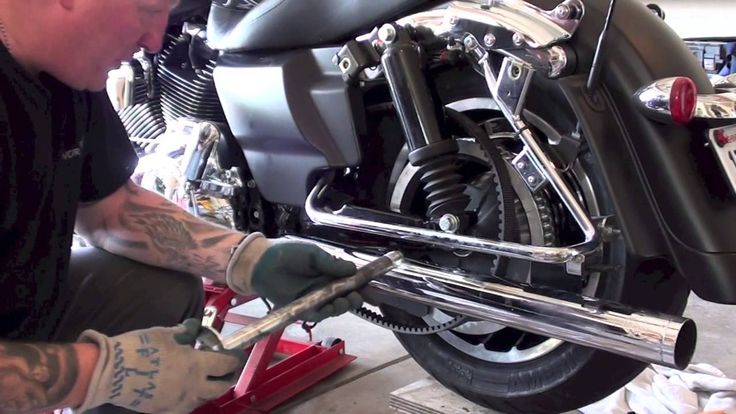 How to adjust the pressure in each of these cases? nine0003
How to adjust the pressure in each of these cases? nine0003
General recommendations will be quite simple. Let's say you have a road bike with the recommended pressure on the swingarm: 2.25 BAR at the front and 2.5 BAR at the rear. If you have road or road-sport tires, then this pressure is more suitable for touring on a lightly loaded motorcycle. In this case, the contact patch will be smaller, the tire will dent less, and, accordingly, its wear will be slower. If you are traveling with a passenger and several cases for very long distances and at high speeds, it is better to increase the pressure in the rear wheel to 2.8 - 3.0 BAR. nine0003
After running several thousand kilometers in this mode, the rear wheel will most likely form a flat ground. But the carcass of the tire will not suffer, and there will be no danger of its destruction. The pressure in the front wheel should not be raised above 2.5 BAR on powerful heavy motorcycles, and 2.3 BAR on medium-sized vehicles. If you increase the pressure in the front wheel even more, then the tire life will not increase from this, and the likelihood of losing grip during braking will increase.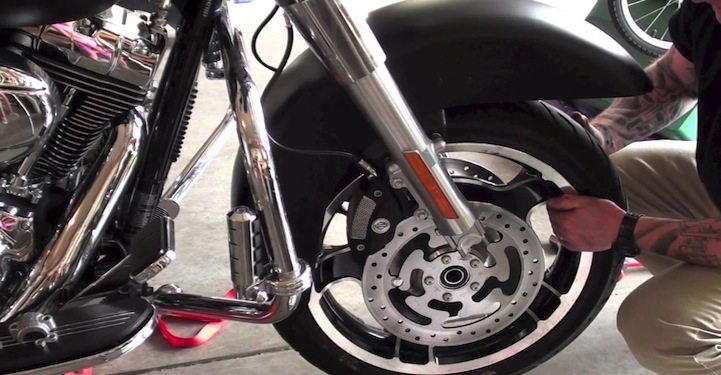
In the city, motorcyclists most often ride without a passenger, make more maneuvers, accelerate and brake. The importance of the tire resource in this case gives way to grip properties. The cost of a mistake, loss of traction and unplanned slipping can be unreasonably high. Under these conditions, on an average motorcycle weighing about 200 kg, in road and sport tires, it makes sense to maintain a pressure of about 2.2 BAR in both tires. Thus, we increase the contact patch and help the rubber warm up faster for better grip. Naturally, the life of the tire decreases with decreasing pressure. But you need to be aware of what is more important: the durability of the rubber or the traction reserve. nine0003
On powerful liter motorcycles, the loads on the rear wheel - and therefore wear - are even higher. And only the owner himself chooses the balance between road grip and the wear rate of the rear wheel.
Finally, a go-kart or racing track. A place where tire resource does not play any role. Only the coupling parameters of the rubber with the canvas of the race track are important. Numerous experiments and experiments undertaken by people who regularly test motorcycles on karts and racing tracks - motorcycle journalists, experts and athletes - show that most sports, road and road-touring tires provide the best traction at a pressure of 2.1 BAR - on the front wheel , and 1.9BAR - on the back, on cold tires. For some rubber models, this value may differ slightly, but in most cases its difference fits into the error of a conventional pressure gauge manufactured in the People's Republic of China.
Only the coupling parameters of the rubber with the canvas of the race track are important. Numerous experiments and experiments undertaken by people who regularly test motorcycles on karts and racing tracks - motorcycle journalists, experts and athletes - show that most sports, road and road-touring tires provide the best traction at a pressure of 2.1 BAR - on the front wheel , and 1.9BAR - on the back, on cold tires. For some rubber models, this value may differ slightly, but in most cases its difference fits into the error of a conventional pressure gauge manufactured in the People's Republic of China.
Lowering the pressure further does not add traction and only worsens the handling of the motorcycle. When the pressure in the front wheel drops below 1.9 BAR, when cornering, the bike's handlebars begin to bend, that is, it tries to turn in the direction of the turn. If the rear tire loses pressure to 1.6 BAR, then in corners the rear of the motorcycle begins to float on the pavement, there is a feeling that is best described by the word “squish”. nine0003
nine0003
Given that the pressure applied on sports tracks allows for the greatest traction of motor tires, many people use it when driving in the city, where the margin of the handle can be a great help when making detour maneuvers or during emergency braking. But you need to understand that tire wear at such a pressure will be higher, and its resource will be less.
Special mention should be made of powerful sport bikes, which often have a recommended pressure of 2.5 - 3.0 BAR on the swingarms. It must be understood that such motorcycles wear tires much more intensively. And the resource of the same rear wheel model on a road bike and on some Eradin will differ by 2 times. Partly recommended high pressure allows you to slightly extend the difficult life of the “cylinders” on such motorcycles. But don't be under any illusions. When you try to go through a "knee" turn, such a high pressure in the wheel can easily send you into a slippery. nine0003
If, on the other hand, you regularly train on sports tracks, then most likely you already have special racing tires on your motorcycle. As already mentioned, this rubber has a special thermal regime. And if for ordinary sports rubber the working temperature is considered to be 50 ° C - 60 ° C, then the temperature of racing rubber in a warm state reaches 100 ° C. Naturally, the pressure in such rubber in the last laps of the race and in the cold state is seriously different.
As already mentioned, this rubber has a special thermal regime. And if for ordinary sports rubber the working temperature is considered to be 50 ° C - 60 ° C, then the temperature of racing rubber in a warm state reaches 100 ° C. Naturally, the pressure in such rubber in the last laps of the race and in the cold state is seriously different.
As a rule, the pressure in the rear wheel "cold" in such tires ranges from 1.4 BAR to 1.6 BAR, and in the front - from 1.5 BAR to 2.1 BAR. Such low numbers are often shocking to beginners who see the 2.9 on the swingarm of their new "liter" sportbike.BAR. But it is these indicators that allow the tires to quickly warm up to the design temperature and increase the pressure in the wheels to operating values.
In this case, unless you are a seasoned road rider who plays with tire pressure, adjusting the behavior of the motorcycle to the characteristics of different tracks, we recommend that you strictly adhere to the values recommended for your particular racing tire by its manufacturer.
Cross tire pressure
Motocross tire pressure is 1.2-0.8 BAR. The main rule: the softer the soil, the higher the pressure. In this case, it is necessary to take into account both the properties of a particular track and the style of the rider. nine0021 In the classic enduro, mousses with different pressures are used instead of chambers: 0.4-0.9 BAR, depending on the type of tracks.
Custom tire selection
On various forums, you can often find questions from beginner motorcyclists regarding the possibility of installing a rear wheel wider than the stock motorcycle. Most often this is due to the fact that in their eyes a wide rear wheel looks more sporty and attractive compared to a narrow one. Often, some draw analogies with car wheels of a larger diameter and width. We will not argue that no matter how wide the wheel is on the old Super Truck, in the eyes of beautiful strangers, it still will not compete with the shiny and illuminated Golda. And just try to understand the physics of the process. nine0003
And just try to understand the physics of the process. nine0003
So, what can we expect if we firmly decided to install a non-standard rear wheel with a wider width on the motorcycle.
The first problem that we will face is that the rim remains the same width as before. That is, a wheel of greater width, stretched on a narrow rim, does not become wider. It flattens and becomes higher than stock. Its diameter grows, the speedometer starts to lie, the back of the motorcycle rises a little. But most importantly, the tire profile carefully calculated by the manufacturer is violated. nine0003
In 2012, in the Russian championship SHKMG, a single type and size of rubber was approved for all classes and types of motorcycles - 190/55/17. Given that the rear wheel disc of 600cc sportbikes is designed for size 180/55/17. Such a replacement did not bring big changes to the behavior of the motorcycle. Although some athletes, for example, Ilona Sergeeva, noted the worst grip on non-standard rubber in the extreme angles of inclination.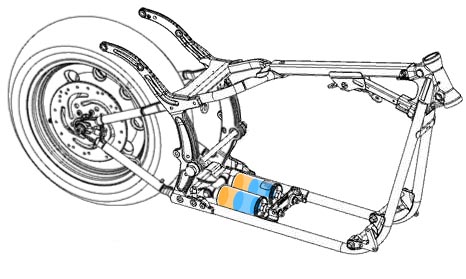
Another example of using a narrow rim and wide tire is the KTM RC 390 and KTM Duke 390. They come stock with a 150/60-17 rear wheel. This means that we will not be able to use the entire surface area of the tire, and the contact patch will be lower than calculated for this model in this size. All this raises questions regarding the optimality of the selected rubber size. We noticed this nuance back in May 2014, during the KTM Duke 39 test.0. And in July 2015, while shooting the RC 390 at the Firsanovka karting track, MotoRRika team rider Ivan Gorev did not take into account this feature of the motorcycle and sent KTM into slippery conditions, missing the rear wheel.
If we're not happy with a simple tire change while keeping the stock rim, and we decide to go further with a wider rear rim on our bike, then other problems stand in our way. It is necessary that the disk and the wheel are normally located in the pendulum and do not touch it when moving. The driven star of a non-standard disk can be shifted to the side relative to the leading star, which will quickly "finish" the chain of the motorcycle. If we managed to get around all these problems, then, as planned, we get a motorcycle with a rear wheel wider than the original. nine0003
If we managed to get around all these problems, then, as planned, we get a motorcycle with a rear wheel wider than the original. nine0003
Trying to ride such a motorcycle, we will notice that its handling has noticeably deteriorated. And now it takes more effort to "put" the bike in a turn. Why did it happen? The fact is that a motorcycle with a wide rear wheel has to lean at a greater angle, applying more effort, to pass the same turn at the same speed. That is why engineers and experts are well aware of the rule: the more wheels already installed on a motorcycle, the more willingly it “dives” into a turn and steers easier. nine0003
Therefore, even on powerful "liter" sportbikes, for which every square millimeter of wheel grip with asphalt is worth its weight in gold, you rarely see rear tires wider than 190mm. or 200mm.
Wheel marking
180/55 ZR 17
Profile width in mm, 180.
Profile height in percent of width, 55.